Helsinki Design Museum celebrates Finnish icons Vuokko and Antti Nurmesniemi
A new exhibition in Helsinki (28 October 2022 – 9 April 2023) highlights the bold and bright creations of Finnish textile artist Vuokko Nurmesniemi and her equally talented husband Antti, Wallpaper* visits the designers’ house in Kulosaari
Guy Bolongaro - Photography
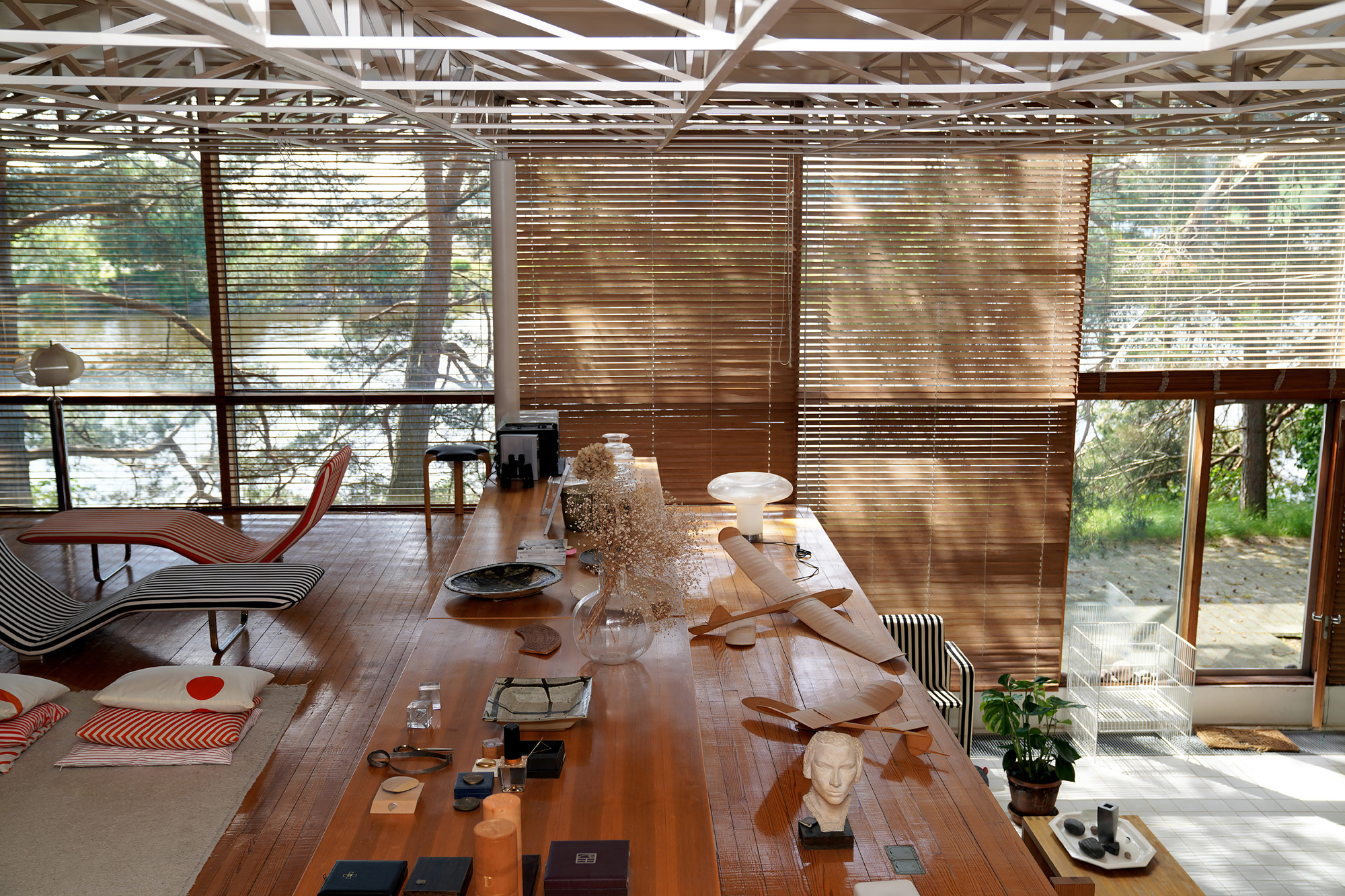
In Helsinki, it’s hard to miss Marimekko: the bold, joyful prints of the much-loved textile house appear in restaurants and bars, on billboards and trams, on cushions and cutlery. They are as Finnish as reindeer and sauna. Ask any Finnish woman, and she will have an item of Marimekko, vintage or otherwise, tucked away somewhere in the wardrobe.
Today, the poppy print Unikko is the most familiar of Marimekko’s designs, but the brand was already famous by the time it was launched in 1964, thanks to the entrepreneurial force of its female founder Armi Ratia and her young designer and textile artist Vuokko Nurmesniemi. Their unstructured dresses and unisex shirts and overalls, printed with stripes, zigzags and ovals in pink and orange and blue and green, brought colour and joy to a dark, depressed country struggling after the Second World War. Ratia and Nurmesniemi would lay the foundations of modern Finnish fashion.

A portrait of Vuokko in the Fine Finland book by Mila Pentti, plus archive images and sketches, including a shot of the ‘Lab’ dress, designed in 1970 and featured on one of Vuokko’s Christmas cards.
Nurmesniemi’s early creations for Marimekko form part of an upcoming exhibition at the Helsinki Design Museum. ‘Antti + Vuokko Nurmesniemi’ charts the long, gilded careers of Finland’s celebrated husband-and-wife creative powerhouse; she, one of Finland’s most illustrious designers, he, a respected interior architect responsible for many modernist landmarks. Together, the Nurmesniemis put Finnish design on the world stage. ‘In the 1980s, they were very famous,’ says Harry Kivilinna, the Helsinki Design Museum curator in charge of the show. ‘People were always talking about them. It was very rare that a wife was better known than her husband, but that was the case with Antti and Vuokko.’
Marimekko is only part of Vuokko’s story. In 1960, she and Ratia fell out when Jackie Kennedy bought several Marimekko dresses and was photographed for the cover of Sports Illustrated magazine wearing a red shift dress by Vuokko. Rivalries and jealousies took hold, Vuokko quit and the pair never spoke again. Ratia carried the quarrel to her deathbed in 1979.
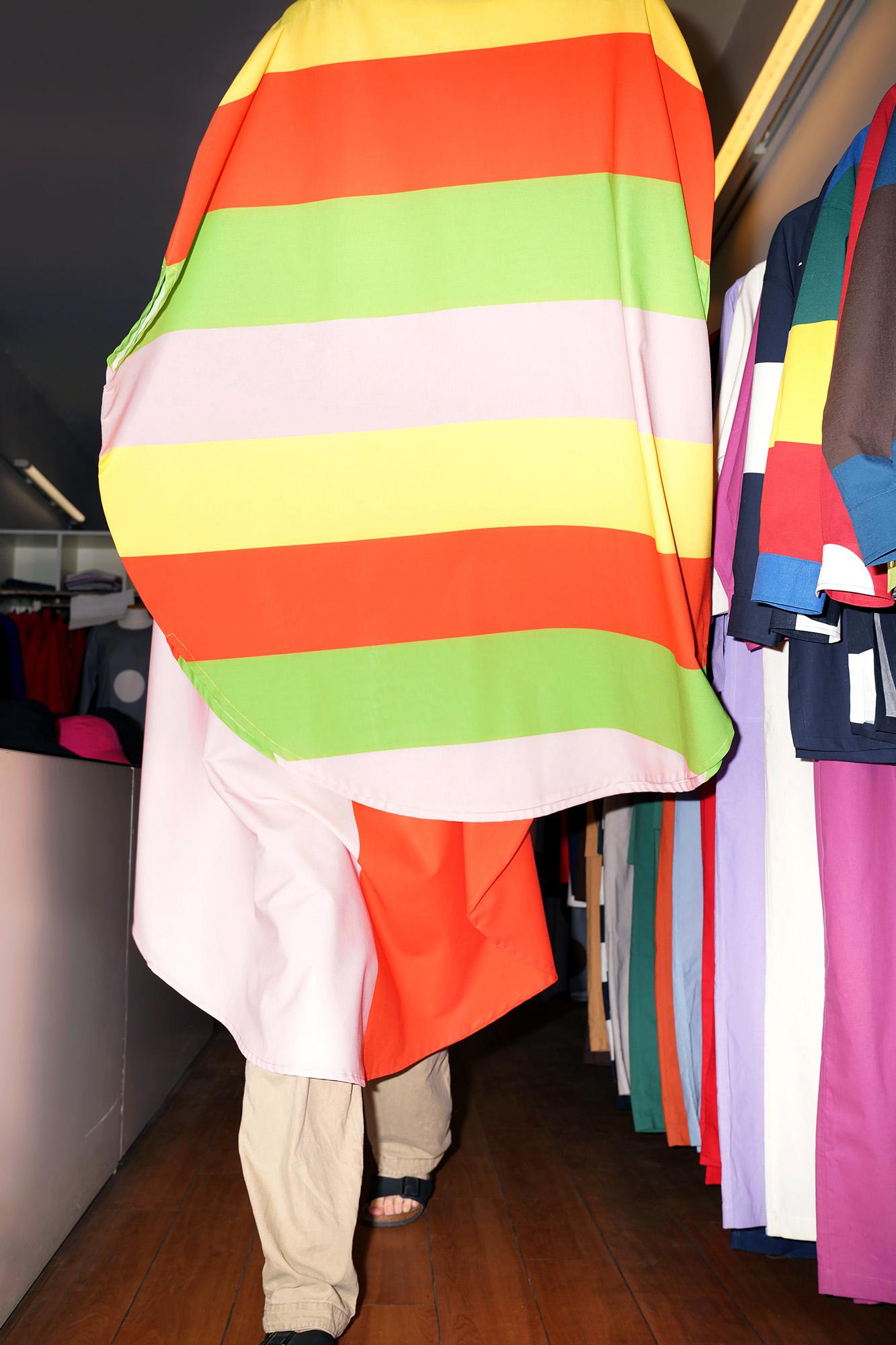
A ‘Myllynkivi 4-stripes’ dress on display at Vuokko’s Helsinki boutique. Based on the 1964 Pyörre pattern, the unstructured garment forms a circle when the wearer raises her hands.
In 1964, Vuokko started her eponymous label. First up was the ‘Myllynkivi’ dress, a circle of fabric in green, pink, yellow and red stripes. It was radical, and a huge hit. From the 1970s to the mid-1980s, Vuokko employed more than 100 people, and customers from Europe and Japan clamoured for her colour-saturated sack-like and tent-like dresses and unisex shirts. But by the late 1980s, the simple silhouettes, lack of embellishment and uniformity of fabrics had lost their appeal, and in 1988, Vuokko filed for bankruptcy. She returned in 1990 with a new label, Vuokko Oy, which continues to operate a small boutique today on fashionable Helsinki street Korkeavuorenkatu.
Her career may have had its ups and downs, but Vuokko’s marriage was steadfast, lasting from 1953 until Antti’s death in 2003. ‘It was more than a love affair,’ describes Pirjo Hirvonen, professor emerita of fashion design at Aalto University, who has known Vuokko since the 1990s. ‘Antti and Vuokko also found happiness together as designers. They were each other’s strongest critic.’ But despite their synergy, the pair rarely worked together; Vuokko had her studio downtown, while Antti’s atelier was at home, in the elegant modernist house he built for them in 1975 on the upscale island of Kulosaari. ‘Their marriage was very equal,’ says Jutta Ylä-Mononen, a journalist whose biography of Vuokko was published in 2021. ‘Antti always had great respect for Vuokko’s creativity. He agreed with Charles Eames, who used to say: “Anything I can do, Ray can do better”.’ The couple had their own careers, yet Vuokko was more careful about saving samples and patterns; thousands are in storage in Kulosaari, and the Design Museum owns more than 1,000 pieces from Vuokko collections. These will be a highlight of the show and will go on display in the museum’s main hall.
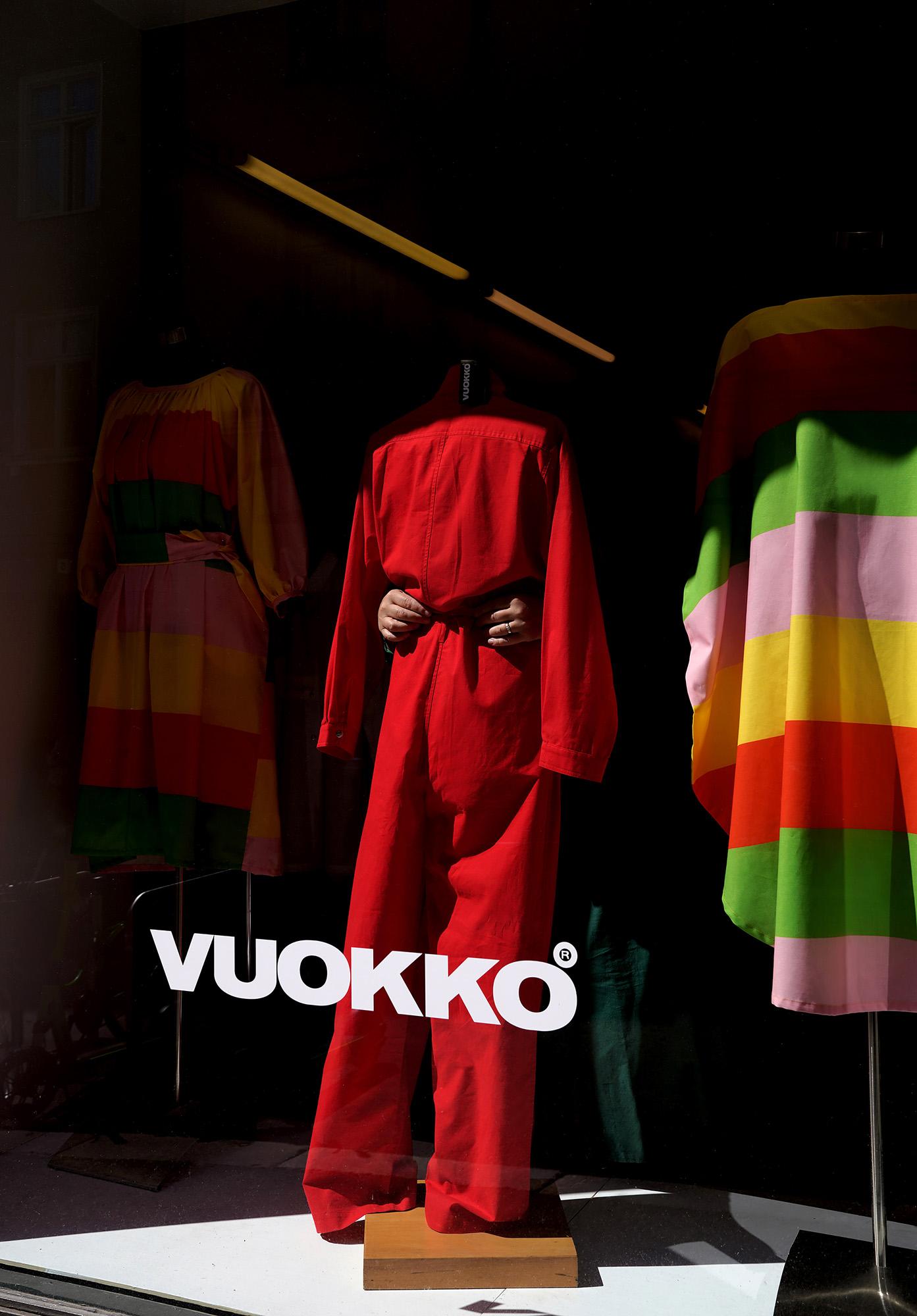
A ‘Loikka Red’ jumpsuit at the Vuokko shop on Korkeavuorenkatu in Helsinki’s Design District.
‘Vuokko knew her value,’ Hirvonen points out. ‘She was the only female designer making clothing who was so famous internationally.’ Antti, too, was well known, having created the orange rolling stock for the Helsinki metro (still in use today) and furniture for the Palace Hotel on Helsinki’s waterfront. And he was extremely well-connected. The Nurmesniemis travelled the world, won prizes, threw parties, and hosted the likes of Charles and Ray Eames in Kulosaari. ‘They did so much to promote Finnish design,’ says Ylä-Mononen. ‘And not just self-promotion; they helped others, too.’
Receive our daily digest of inspiration, escapism and design stories from around the world direct to your inbox.
Born in a working-class district of Helsinki in 1930, Vuokko was 15 when her mother died of pneumonia. As the eldest, she had to take care of her younger sister and brother while her father went out to work as a taxi driver. ‘I think the death of her mother was the reason Vuokko became who she became,’ says Ylä-Mononen. The young Vuokko had to be independent and strong, characteristics that landed her the job at Marimekko in the first place. Ratia was looking for a designer to copy a mosaic print she had spotted, and knew Antti had a girlfriend who was a fresh-out-of-college ceramicist. Never having worked with prints, Vuokko agreed, and presented a bold pattern of black, white and blue stripes that had nothing to do with mosaics. ‘She had to take responsibility,’ explains Ylä-Mononen. ‘She understood early on that everyone has to make their own happiness. Yes, we Finns have sisu [toughness and resilience, a national trait that helped build an independent Finland after 1917]. But Vuokko is special.’
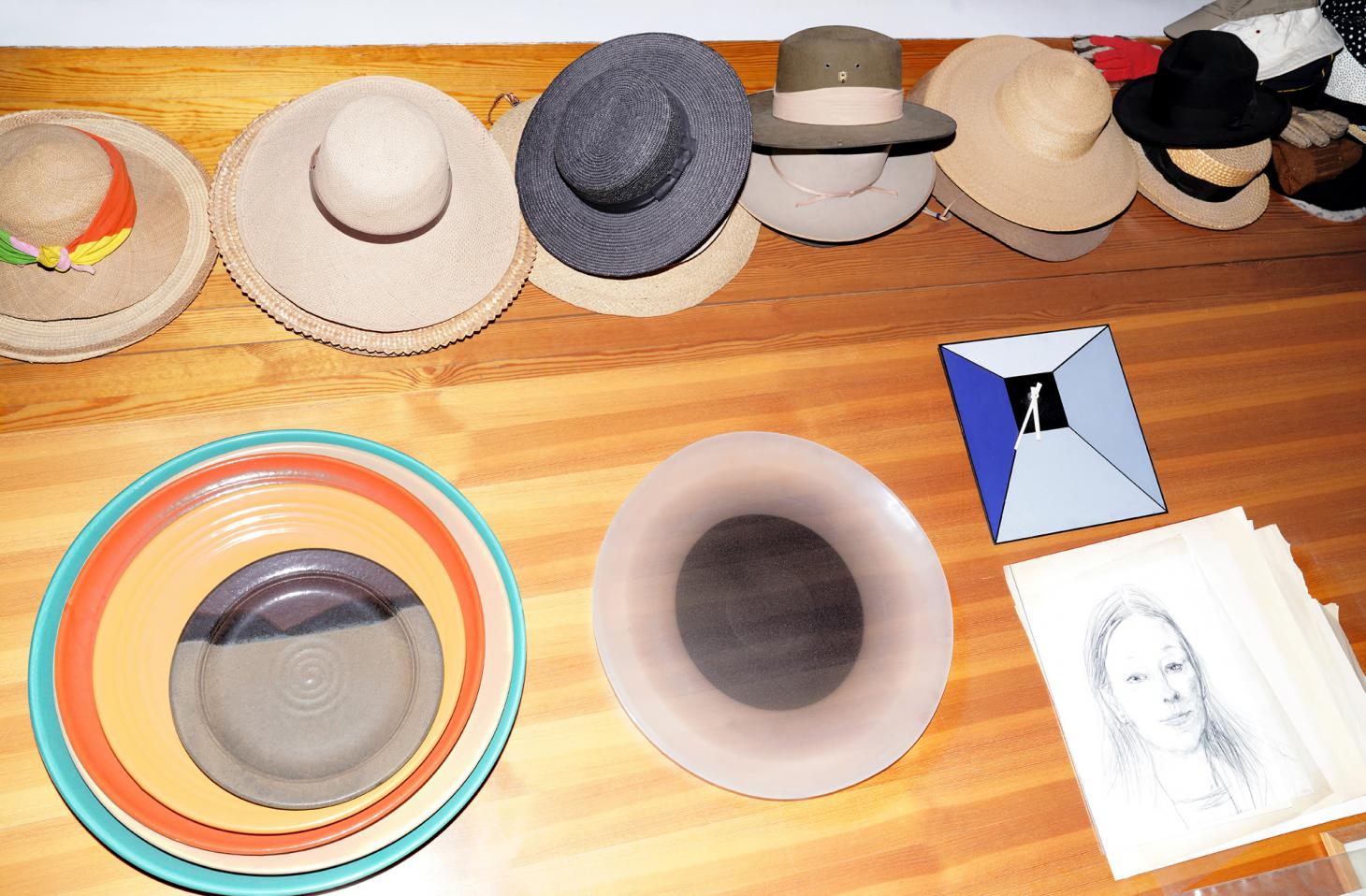
Some of the items in Vuokko’s comprehensive hat and ceramics collections.
She was a self-avowed ‘feminist’ who also washed her hair in egg yolks and used paper bags instead of plastic ones. ‘In the 1950s, Marimekko was making housecoats that were sold in the household section of department stores,’ explains Kivilinna. Vuokko’s loose dresses in bold colours brought glamour behind closed doors, and were quickly seen as too nice to be confined to the nursery. Women started wearing them out, ditching tight corsets along the way. In 1956, Vuokko went further, designing the striped unisex ‘Jokapoika’ shirt. She fitted it with cheap aluminium buttons, the sort that farmers wore, that she had picked up in a small shop in the countryside. ‘Jokapoika’, with its hand-drawn Piccolo stripes, is still a bestseller. In 2003, Finland’s first female president Tarja Halonen wore a Vuokko evening gown at an Independence Day reception. Made of silk taffeta, it was typically unstructured around the body and had a loose cape.
Despite such successes, Vuokko never called herself a fashion designer. Though she took a few fashion classes at Helsinki’s Institute of Industrial Arts, her degree was in ceramics. ‘Vuokko worked between fashion and design; she played with an idea and tried to find something new within it, cutting a fabric in different ways, or using the same pattern in many different ways,’ says Hirvonen. ‘And always she followed the Finnish tradition for simplicity.’
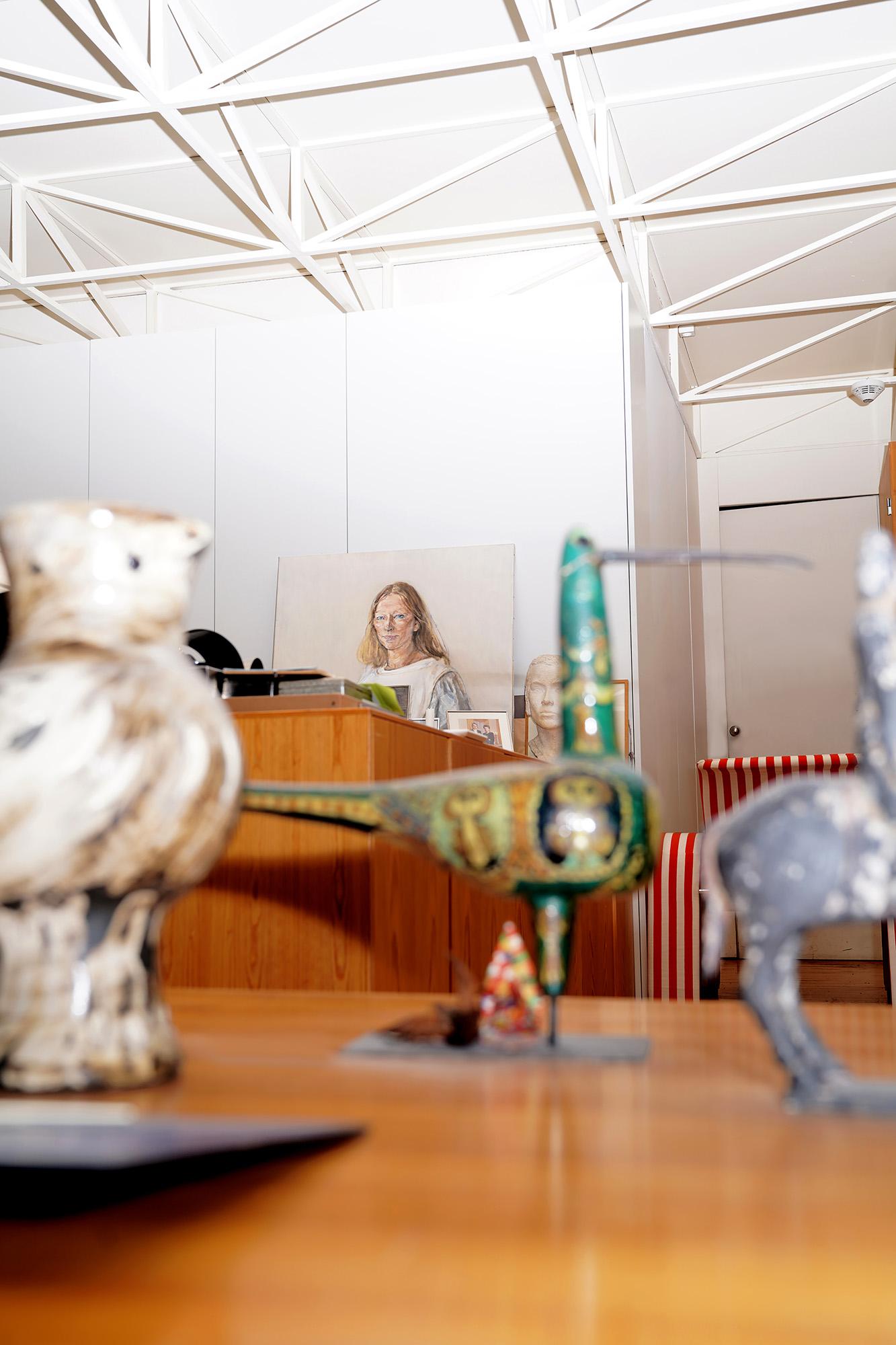
A portrait of Vuokko Nurmesniemi by Roberto Sambonet in her home office, with a ceramic vase by Pablo Picasso and a bird figurine by leading Finnish ceramicist Birger Kaipiainen.
Antti’s path was more well-trodden. By the time he graduated in 1950 from Helsinki’s Central School of Applied Arts, Finnish modernism was in full swing; Alvar Aalto was working for leading American universities, Tapio Wirkkala’s glassware was winning international awards, and, in 1957, Kaj Franck said to Antti, ‘It’s your turn next.’ The endorsement spurred on the young Antti, who created interiors for the Hyvinkää Church, a modernist landmark, and for the Artek drawing office among others.
‘His furniture is quite rare, since the editions were often small,’ says Antti Tevajärvi, director of Artek’s 2nd Cycle vintage store in Helsinki. ‘The 1960 Triennale series is very sought after and the chaise longue with Vuokko’s striped seat cover is one of my favourites.’ Best-known are the ‘Wärtsilä’ coffee pot and the ‘Sauna’ stool.
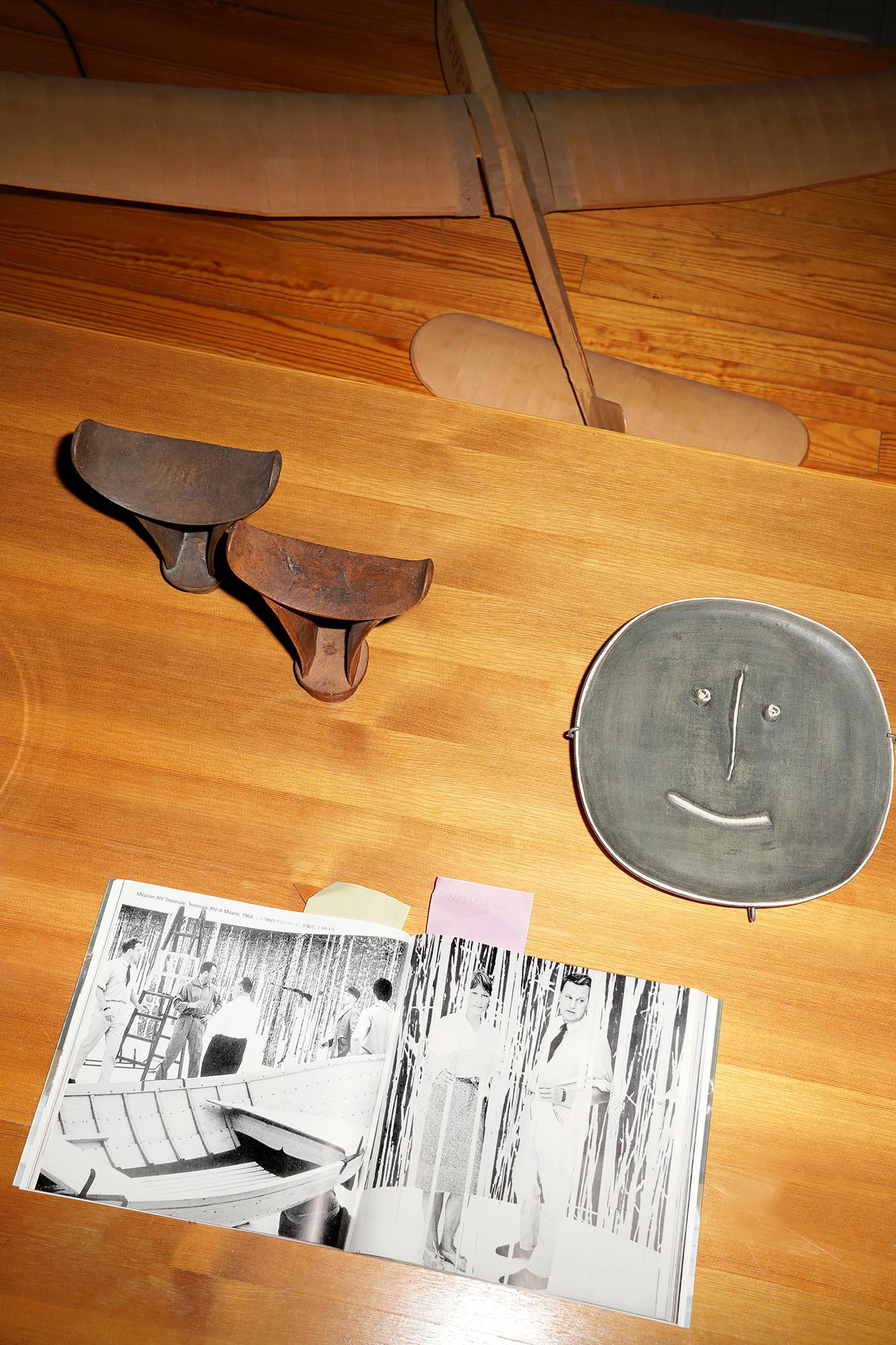
A pair of ancient Japanese headrests and a plate by Picasso are displayed next to a book on Antti Nurmesniemi.
This autumn, the ‘Sauna’ stool is being reissued by Vuokko’s niece Mere Eskolin. Eskolin started working for her aunt 23 years ago and is now managing director of the company, custodian of the house in Kulosaari, and caretaker of the Nurmesniemis’ legacy. They never had children; a near-fatal bout of appendicitis when Vuokko was a student ruled out the possibility. ‘It was a huge issue for both of them,’ says Ylä-Mononen. ‘But Vuokko is a positive person; she told me she thought she and Antti would never have stayed so close if they had ever had a family.’ Antti’s ‘004’ chair, upholstered in Vuokko’s black-and-white and red-and-white stripes, will also launch in the autumn, followed by a divan, pendant lamp, ‘Amer’ lounge chair and ‘Pehtoori’ coffee pot.
Eskolin faces a huge task. The two-storey house, which Vuokko, aged 92, left earlier this year to take up residence in a care home, contains Antti’s archive – hundreds of photos from the shoots that took place there, artworks, books, family portraits and furniture, most of which was designed by Antti. Objects and photos are proudly displayed: Vuokko, aged 17, all angular cheekbones and pixie cut; the couple with presidents and the Queen of Denmark; medals from Triennials and expos and art institutions. It looks like a museum-in-the-making, which Eskolin hopes it will become.
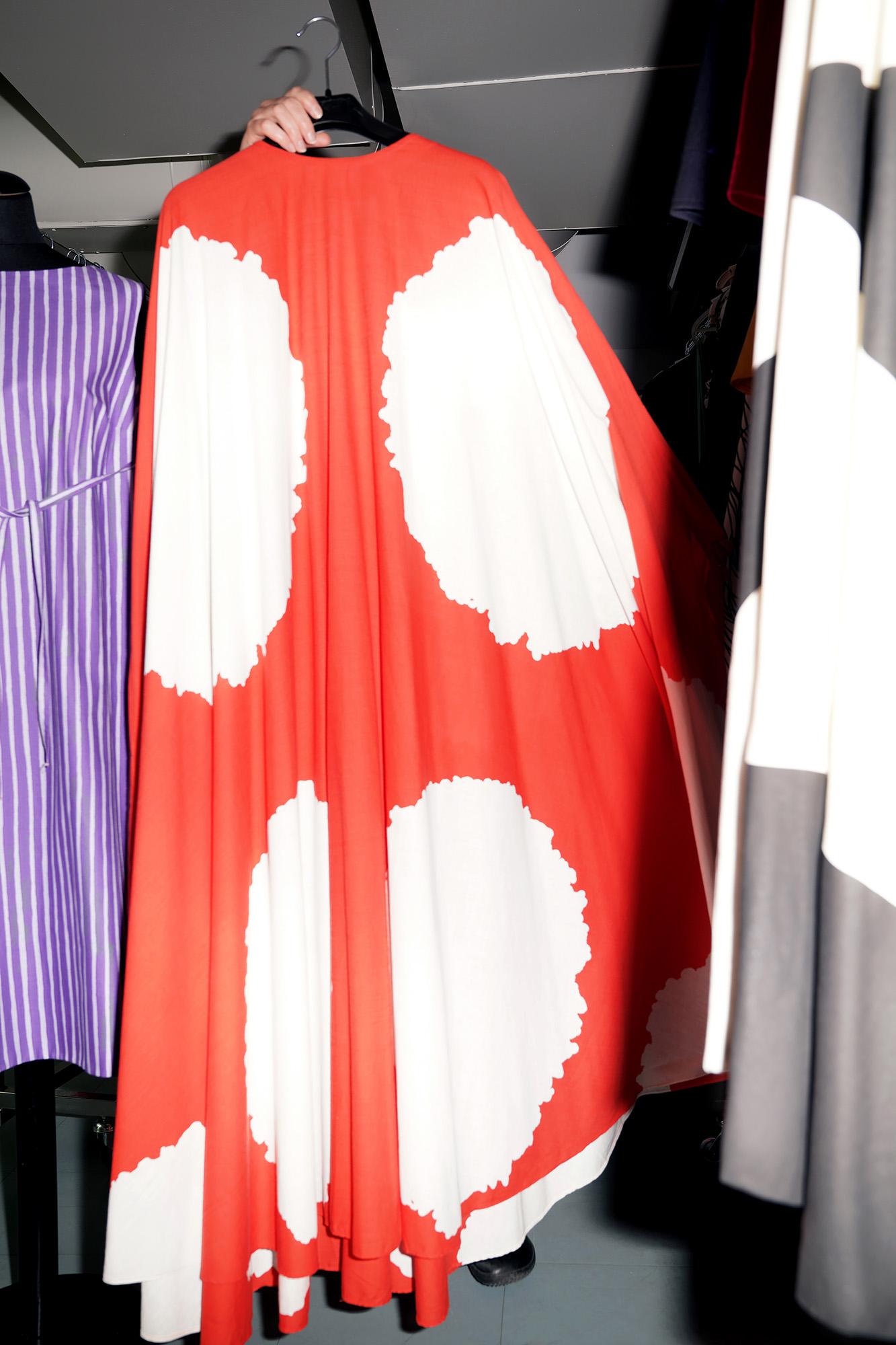
Vintage Vuokko dresses photographed at Helsinki’s Design Museum.
And what of Vuokko the label? It will continue to make bestsellers such as ‘Loikka’ jumpsuits and ‘Messu’ dresses, and will produce new pieces from the archives. ‘There’s enough to keep going for the next 20 years. Vuokko was very creative; she made samples all the time,’ says Kivilinna. But guiding the Nurmesniemis’ legacy is a big responsibility.
‘It’s very strange talking about them,’ adds Eskolin. ‘Like I’m someone. I’m not. Vuokko and Antti are. I need to make sure people don’t forget that.’
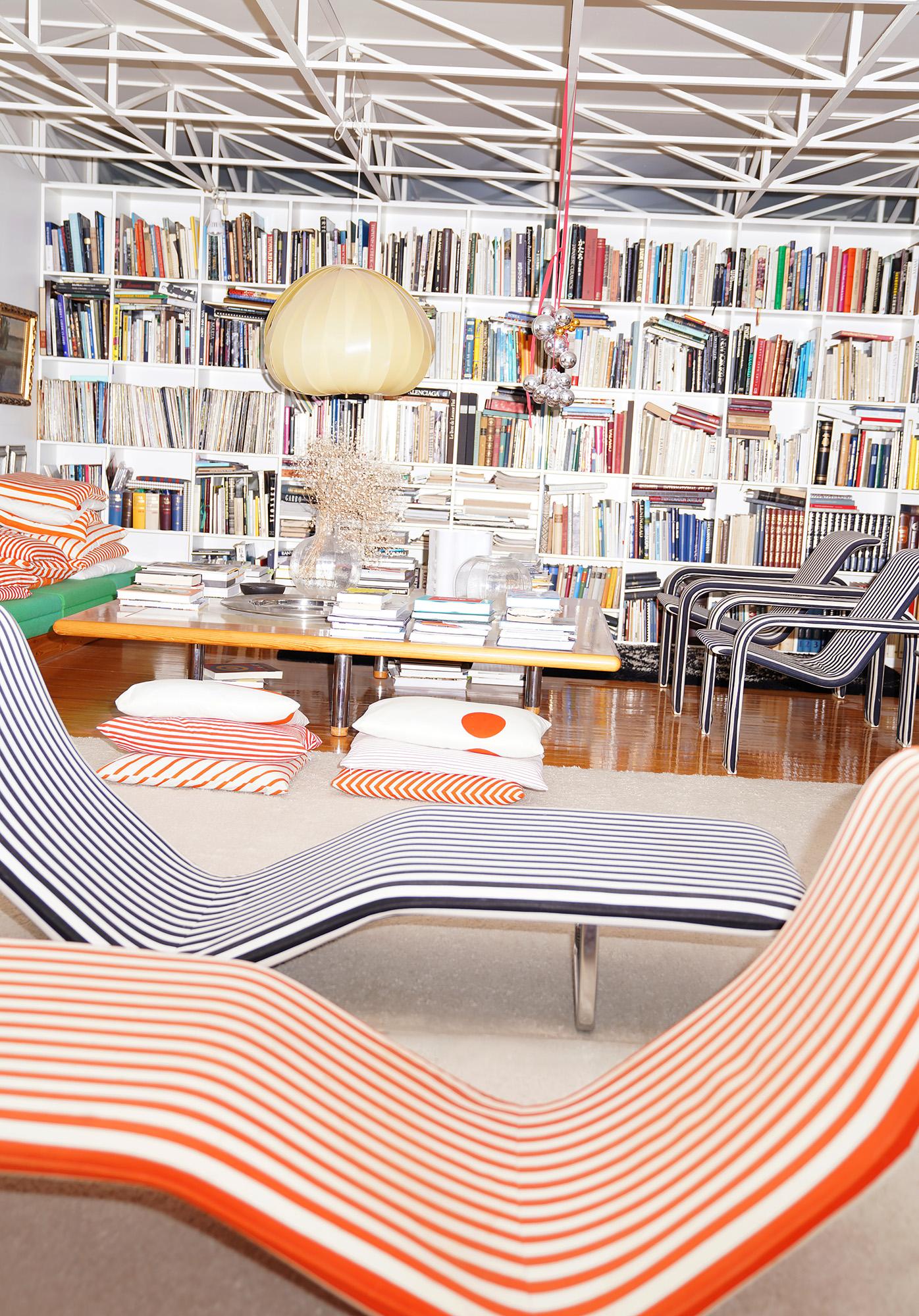
Antti’s designs include this 1980s coffee table, as well as the 1960s ‘004’ lounge chairs and 1970s ‘001’ daybeds, all upholstered in Vuokko’s signature fabric. A black-and-white striped armchair will be reissued for the exhibition.
INFORMATION
‘Antti + Vuokko Nurmesniemi’ is showing from 28 October 2022-9 April 2023 at Design Museum
designmuseum.fi
vuokko.fi
ADDRESS
Korkeavuorenkatu 23
Helsinki
Emma O'Kelly is a freelance journalist and author based in London. Her books include Sauna: The Power of Deep Heat and she is currently working on a UK guide to wild saunas, due to be published in 2025.
-
 In Norway, discover 1000 years of Queer expression in Islamic Art
In Norway, discover 1000 years of Queer expression in Islamic Art'Deviant Ornaments' at the National Museum of Norway examines the far-reaching history of Queer art
-
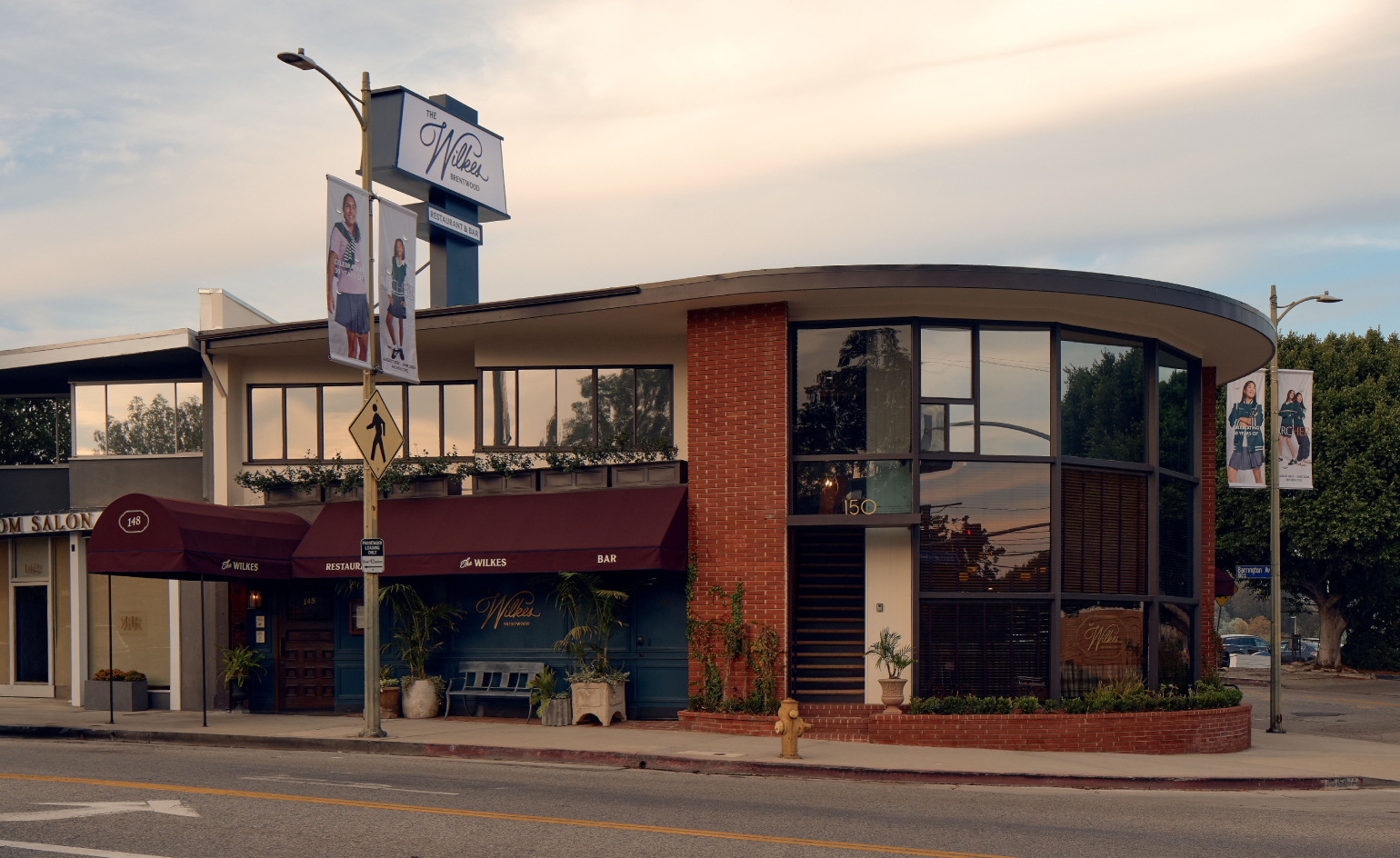 The Wilke is LA’s answer to the British pub
The Wilke is LA’s answer to the British pubIn the Brentwood Village enclave of Los Angeles, chef and restaurateur Dana Slatkin breathes new life into a storied building by one of Frank Gehry’s early mentors
-
 Top 10 gadgets of 2025, as chosen by technology editor Jonathan Bell
Top 10 gadgets of 2025, as chosen by technology editor Jonathan BellWhat were the most desirable launches of the last 12 months? We’ve checked the archives to bring you this list of the year’s ten best devices
-
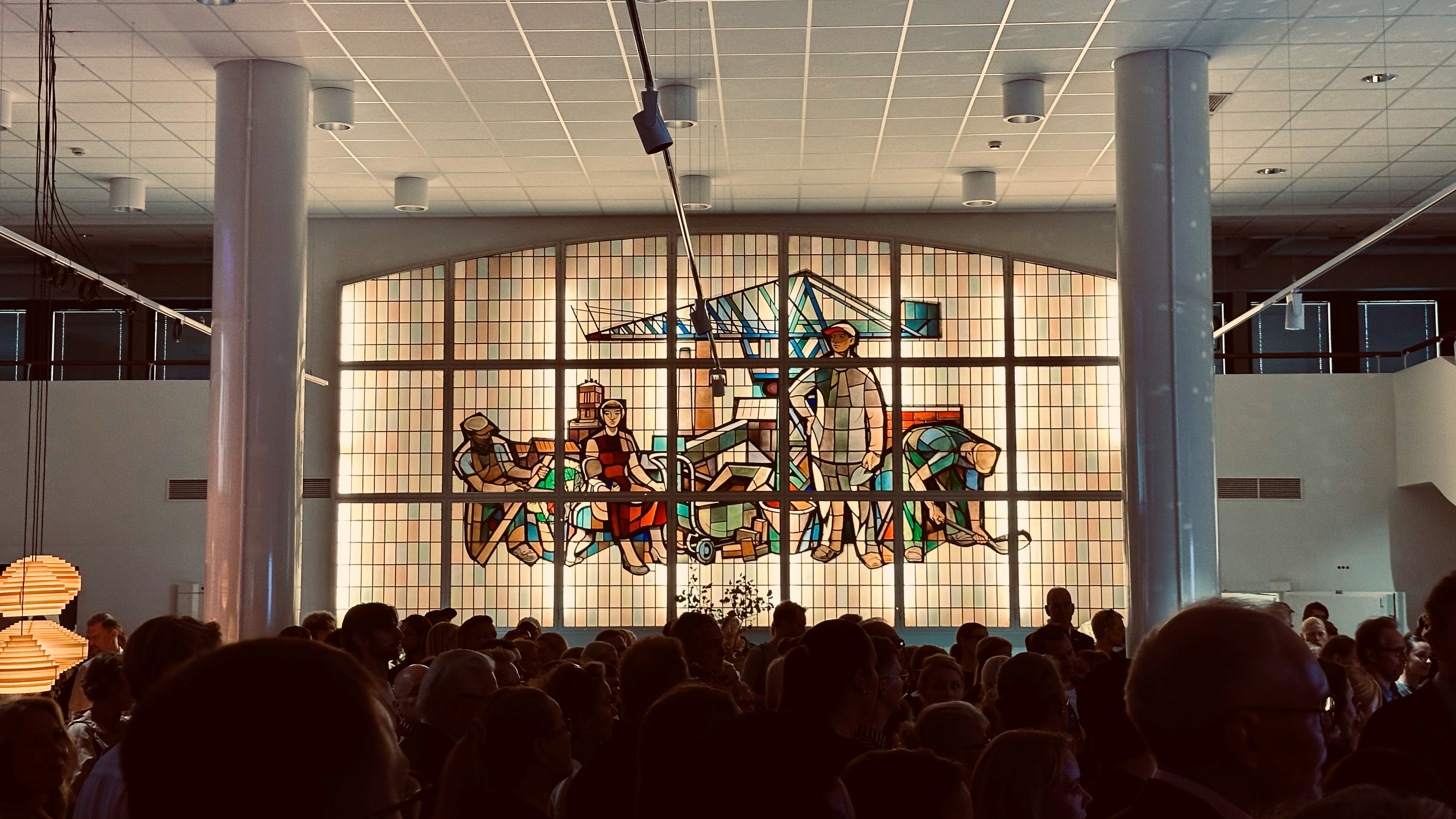 Postcard from Helsinki Design Week 2024
Postcard from Helsinki Design Week 2024The Finns lead the way when it comes to integrating design into everyday life, as they deftly demonstrate during Helsinki Design Week 2024
-
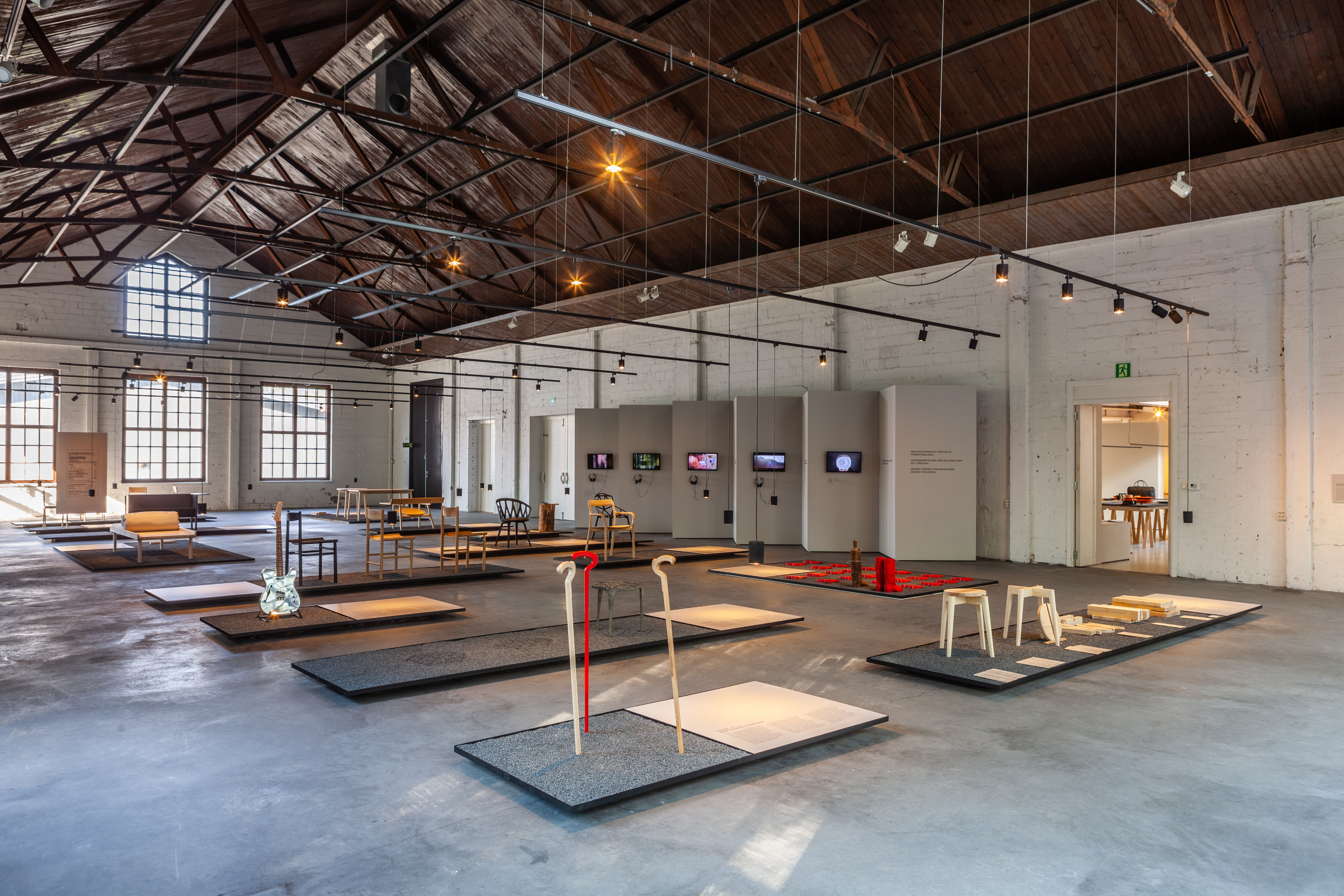 Finnish village Fiskars opens new art and design Biennale
Finnish village Fiskars opens new art and design BiennaleBritish designer Jasper Morrison co-curates the inaugural festival, appointing 18 international designers to create benches for the village
-
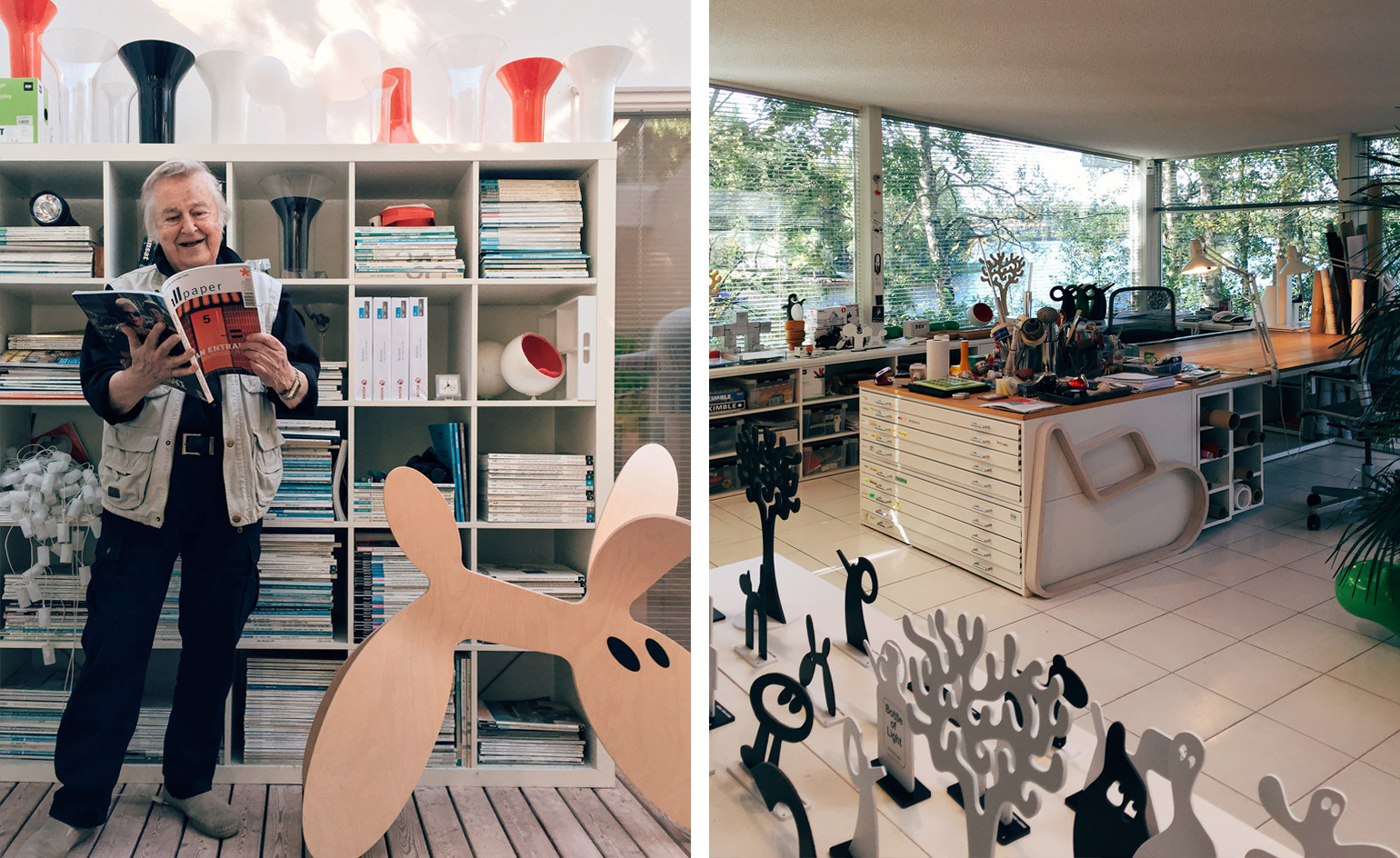 Eero Aarnio at 85: ‘I am the master of my own design’
Eero Aarnio at 85: ‘I am the master of my own design’ -
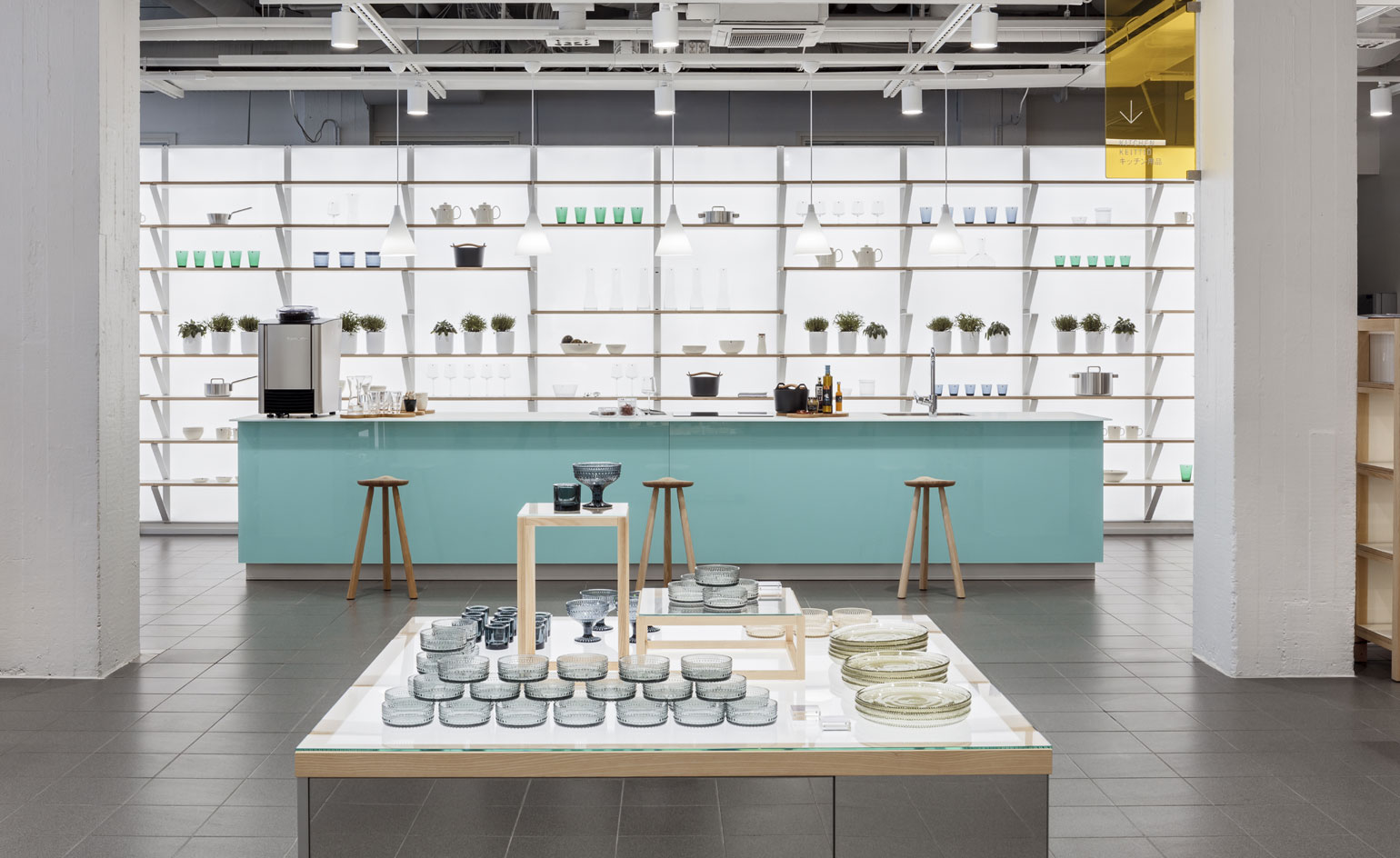 Iittala and Arabia's new Helsinki store offers the full Finnish design experience
Iittala and Arabia's new Helsinki store offers the full Finnish design experience -
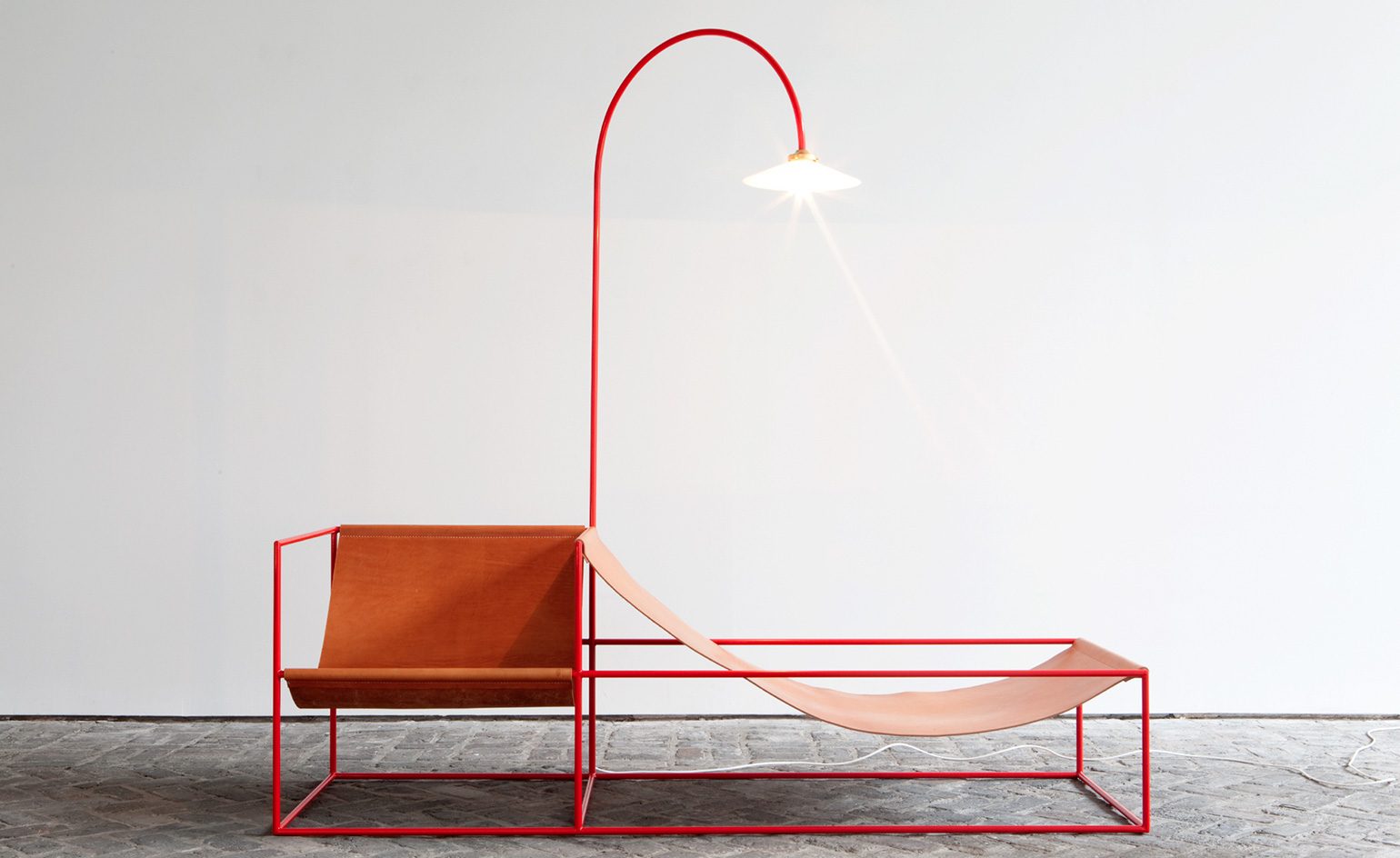 Global gathering: Jyväskylä welcomes the 8th International Alvar Aalto Design Seminar
Global gathering: Jyväskylä welcomes the 8th International Alvar Aalto Design Seminar -
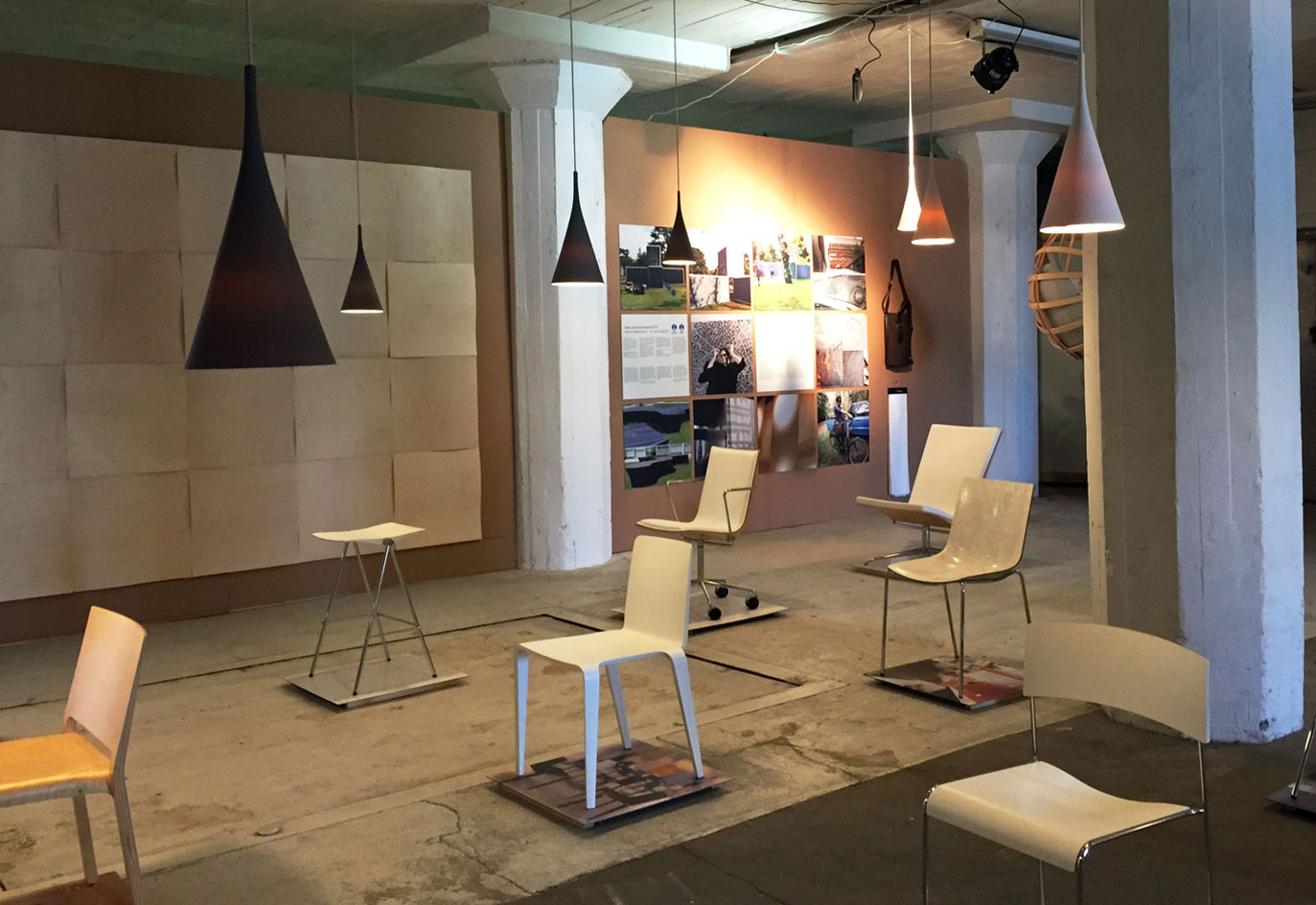 Maiden voyage: L3 Design Dock opens for Helsinki Design Week
Maiden voyage: L3 Design Dock opens for Helsinki Design Week -
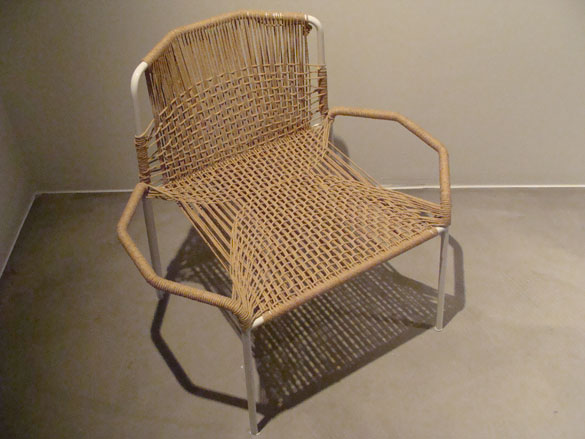 Helsinki Design Week 2011
Helsinki Design Week 2011 -
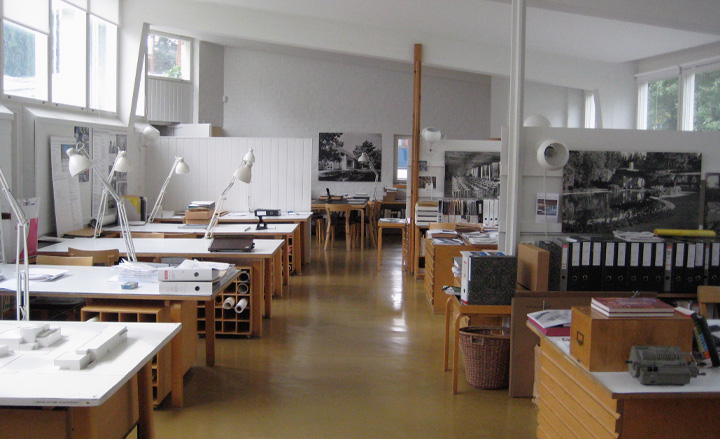 Helsinki Design Week 2010
Helsinki Design Week 2010